Regardless of the types of Christmas trees out there, how about the sudden surge in consumer preference for real trees this year, period? Fake Christmas trees aren’t going anywhere, but there is a switch this year, with a 20% increase in shoppers looking for the real deal in 2023.
After all, it’s hard to beat that deep woods, rich pine smell that fills most of the house with the spirit of the season. The types of Christmas trees on the market each year feature a great variety, and you can’t count them all on one hand. That said, here are 14 of the best Christmas trees for this holiday season and many seasons to come.
1. Balsam Fir
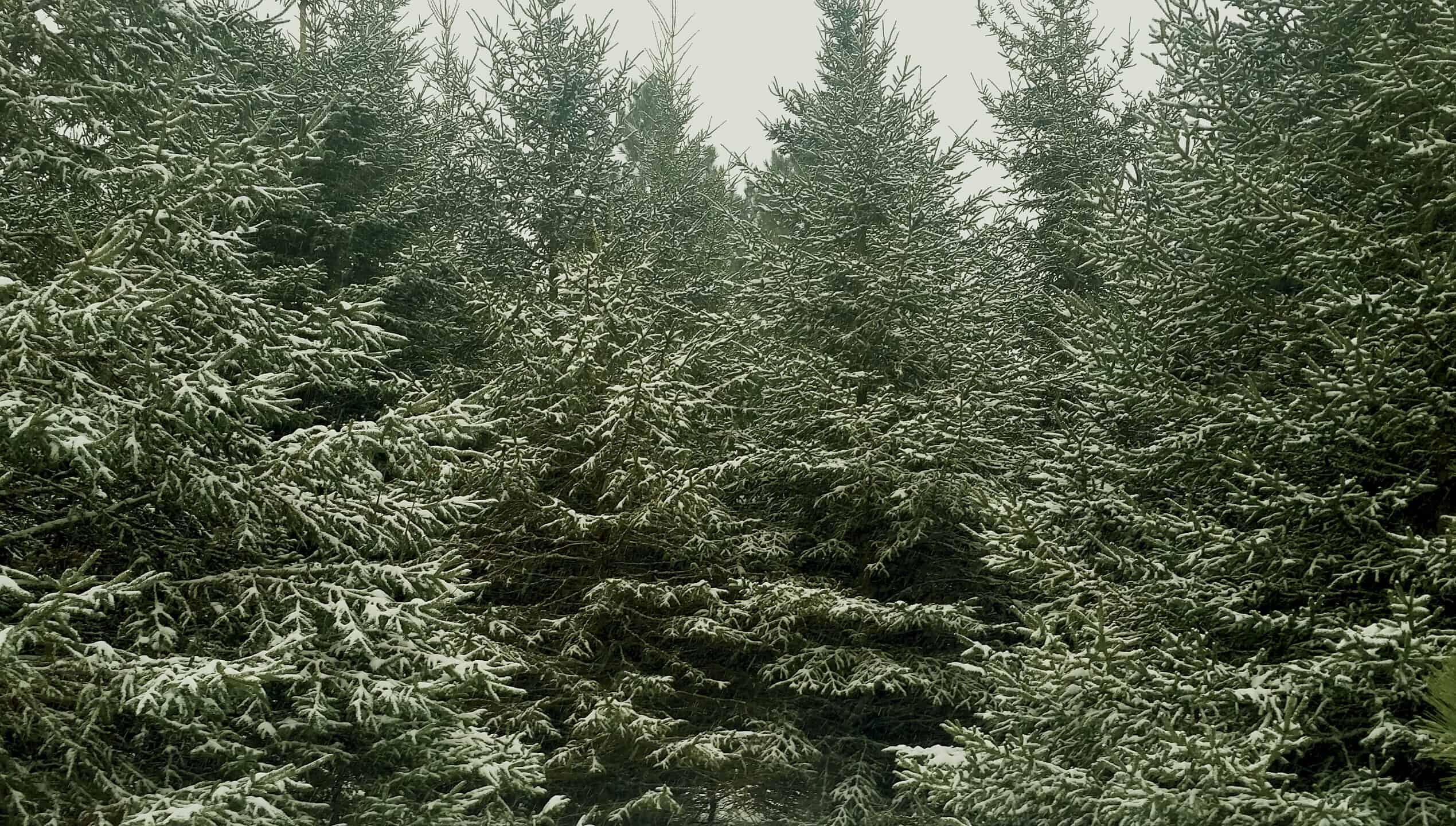
Balsam fir trees are still in their natural, snowy environment.
©Sonia Horowitz/Shutterstock.com
The balsam fir is a classic Christmas tree, thanks to its robust body and conical shape. It helps that balsam firs smell wonderful while not being overpowering. Very flexible branches allow for some ingenuity with ornament hanging and overall design. However, they may be a little too flexible for exceedingly heavy ornaments.
The needles on balsams are very dark and last a long time, assuming you supply the tree with water and food. With its rich perfume and long-lasting needles, It’s easy to see why balsam fir remains so popular among various Christmas trees.
Balsam firs Christmas trees generally range from 4.5′ and 8.5′ in height and cost between $60 and $110, depending on the overall size and when you purchase the tree.
2. White Pine

White pines are the hypoallergenic choice for those who have allergies to pine needles.
©Sunshine Haven Photo/Shutterstock.com
Buying a white pine Christmas tree early in the month is no biggie since the beautiful blue/green needles on this famous tree last a long time. It’s also a soft Christmas tree with needles that don’t poke and prod too much while you hang your ornaments. The branches are robust and solid enough to accommodate heavier ornaments as well.
White pine is a good choice for those who suffer from pine allergies. While It’s still capable of causing allergic reactions, it’s not as bad as some of the other types of Christmas trees on our list. It doesn’t have a potent smell, which is also suitable for those sensitive to heavy pine smells. If you love the strong smell of Christmas trees throughout the home, however, white pines won’t cut.
White pine Christmas trees are available from 4.5′ to 8.5′ in height and cost between $55 and $90. Each year, white pines are generally the most affordable option on the Christmas tree market.
3. Fraser Fir

Fraser firs have soft needles with rounded ends.
©ANGHI/Shutterstock.com
The Fraser fir is a short, robust little Christmas tree with strong branches capable of holding the heaviest ornaments. Some people don’t prefer them because of how dense they are. Those interior ornaments have no chance on a Fraser fir.
However, some nifty, robust light arrangements will create a deep, resonating under glow that is an excellent backdrop for whatever Christmas theme you choose. Fraser trees also have one of the strongest scents of most Christmas trees. The needle retention is excellent as well.
Fraser trees are available between 5′ and 8′ with a cost ranging from $60 to $110, depending on the tree size and when you make a purchase.
4. Douglas Fir

Douglas firs have a strong, pyramid-like shape when they aren’t covered in snow.
©Paul B. Moore/Shutterstock.com
The Douglas isn’t a true fir, but that doesn’t make much of a difference in popular Christmas trees. They aren’t as thick as Fraser firs but still feature a whole body and solid branches for your biggest ornaments.
Douglas firs need plenty of water, however. The needles won’t last very long if you don’t stay on top of it. Douglas firs often result in much sweeping when it’s time to remove the tree each season. Despite this, the Douglas is one of the most popular Christmas trees in the United States annually.
Douglas firs are usually sold between 5′ and 10′ in height and cost between $70 and $130.
5. Noble Fir
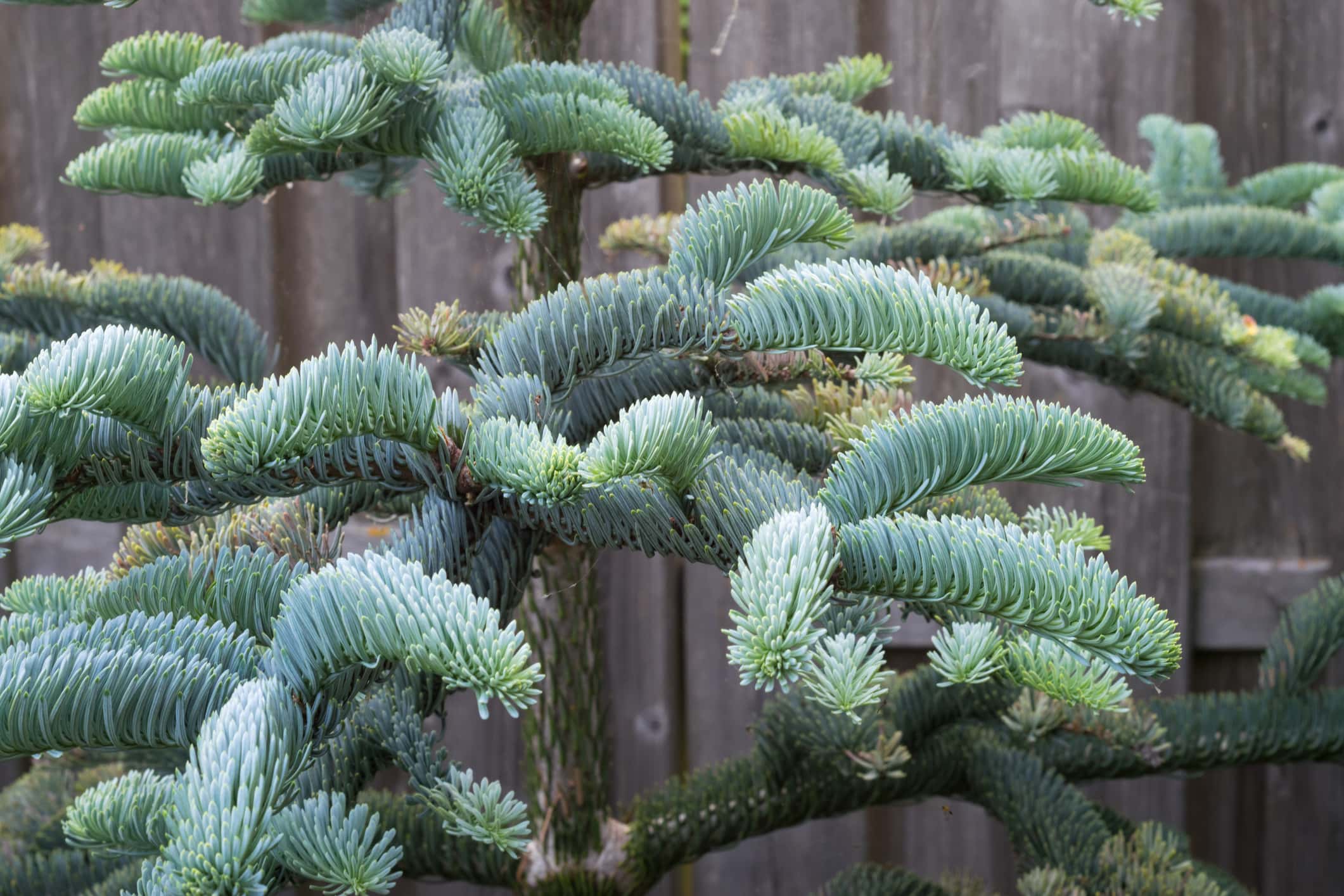
The noble fir features beautiful, curvy needles.
©Meindert van der Haven/iStock via Getty Images
The noble fir tree is a long-term tree with the ability to retain water for a very long time. If you like to put your tree up right after Thanksgiving, the Christmas tree types with the most staying power should be high on your list. The noble fir makes the cut, and it’s a stunning tree to boot.
Even though its needles are curvy, the tree is symmetrical, with a blue/green hue highlighted by streaks of silver throughout. The branches are pretty solid as well, and most ornament sizes and weights will hold up well. Since they are the “Cadillac” of Christmas trees, nobles usually command a premium price.
Noble trees are typically available between 5′ and 10′ and run between $60 and $200.
6. White Spruce

White spruce needles are short, sharp, and robust.
©Alexander Varbenov/Shutterstock.com
The white spruce is one of the best Christmas trees for those who like to pile on the ornaments. The needles are short and robust, with plenty of strength and staying power in the branches. White spruce will accommodate most ornaments without drooping over time.
If there’s one thing that holds this tree back among popular types of Christmas trees, it is the lousy aroma when crushing the needles. Otherwise, the needles have an excellent, deep blue/green color, and the tree has a solid, conical shape and a healthy body.
White spruce is usually sold from 5′ to 12′ in height, and costs range from $55 to $115, making it one of the more affordable options.
7. Grand Fir
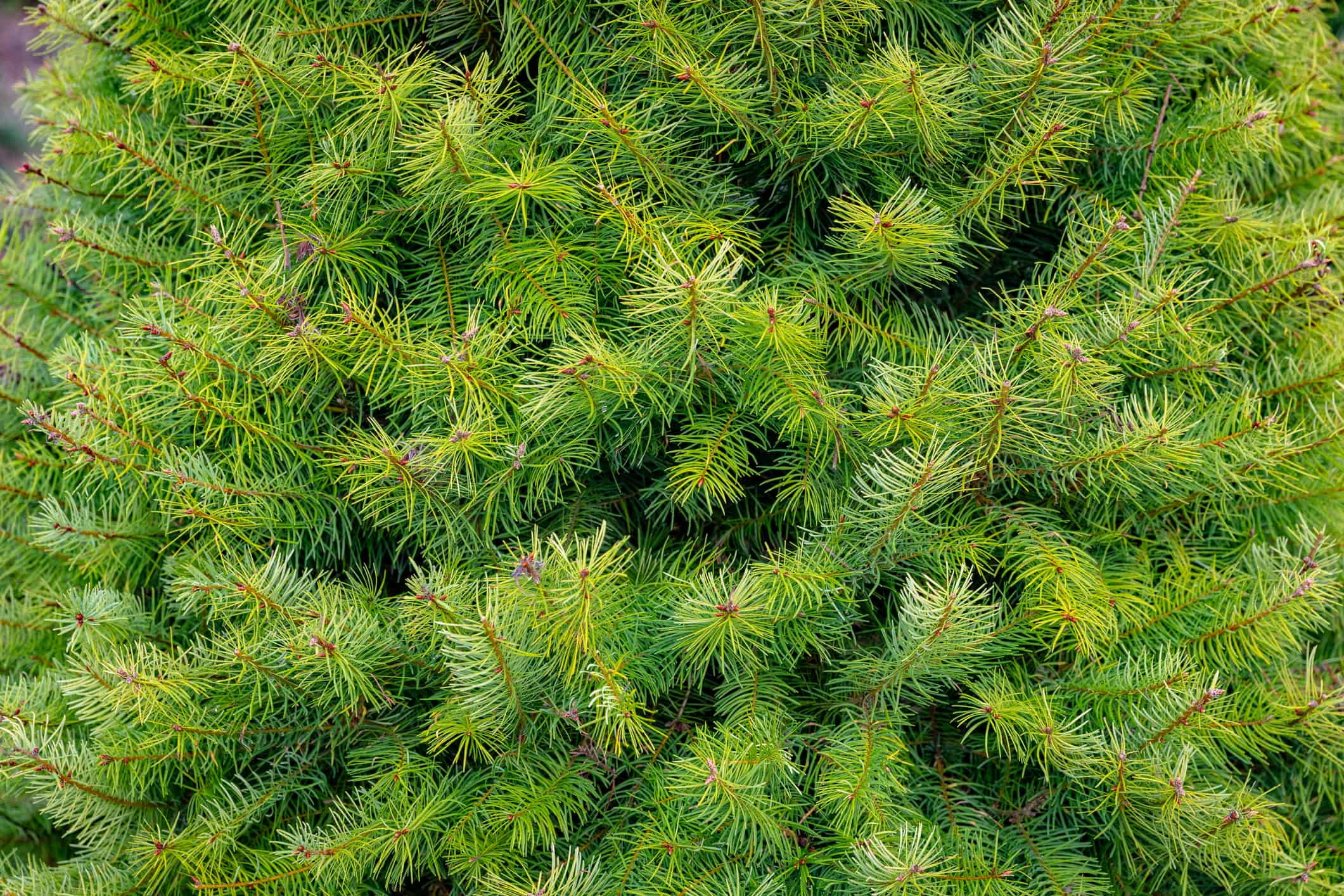
Grand fir Christmas trees grow to very large sizes, upwards of 230′.
©Gerardo Martinez Cons/iStock via Getty Images
The grand fir makes for an exceptional outside tree since they grow so large, and you can purchase them in sizes too large for your house. They give off a fantastic smell and, if the wind is still or blowing just right, will fill the immediate area with a fresh pin scent.
If you decide to go with a younger, smaller version for the inside, grand firs are robust, conical, and wide at the base. Silver highlights accommodate the deep green needles, thanks to a white underside on each needle. Grand firs are also known for being the most fragrant Christmas tree types on the market.
As an inside tree, grand firs range from 5′ to 10′, costing $65 to $150.
8. Blue Spruce

This blue spruce stands alone, showing off its gray/green/blue colors with a splash of white and silver.
©Miraleks/Shutterstock.com
Another conical-shaped tree, blue spruce, is a consistently popular choice every year. The fact that it’s Colorado’s state tree speaks volumes of this tree’s popularity. If you provide this tree with water and plant food, the needles will last forever without draining the water from the stand.
It has strong branches and can tolerate the most elaborate and heavy of ornaments. Thanks to its silvery highlights, it’s a favorite for many unique, aesthetic Christmas tree designs and decorations. The needles are long and pointy, so they poke you as you string your lights and hang ornaments.
These trees are usually sold in the 5′ to 8′ range and cost between $60 and $110.
9. Black Hills Spruce
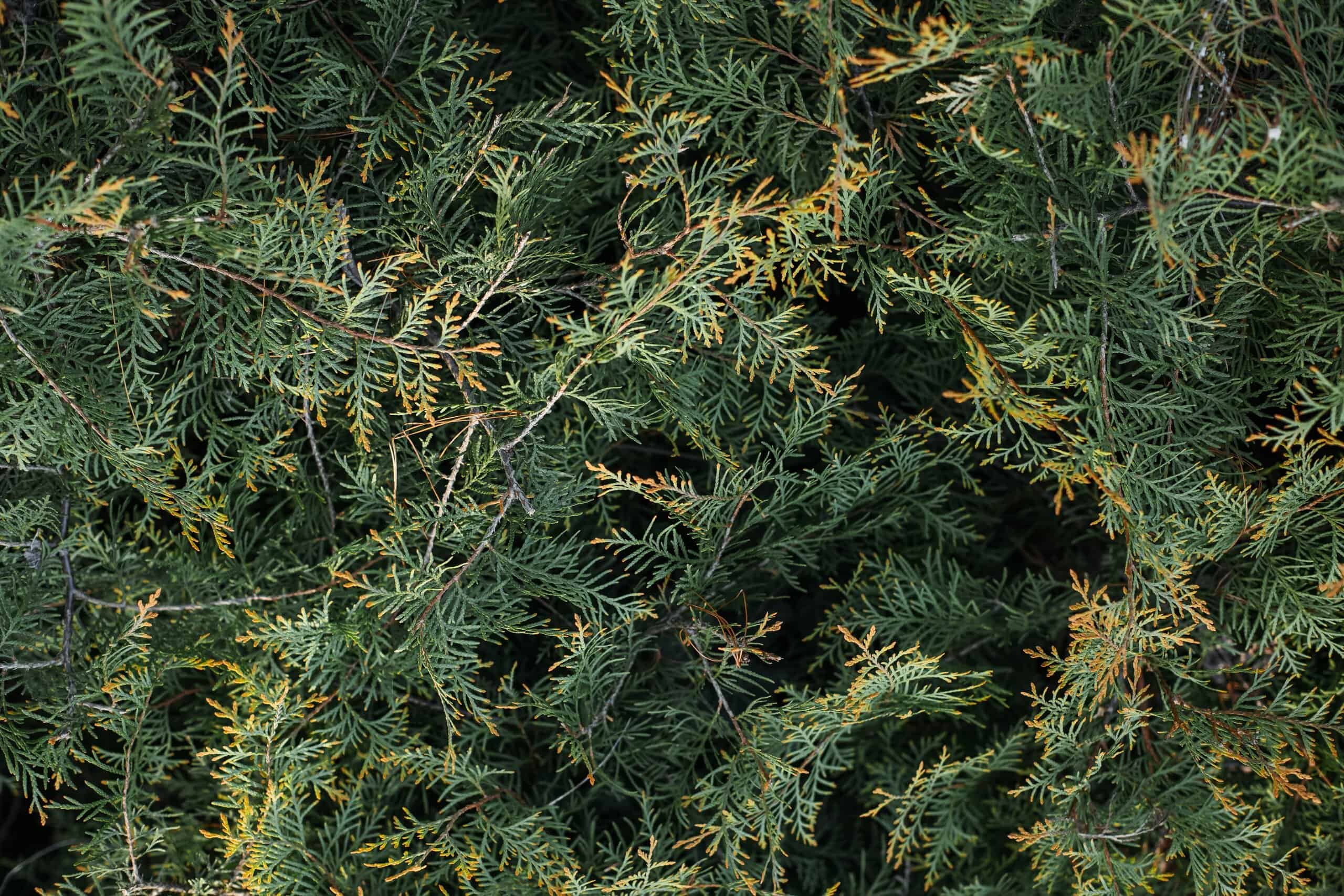
Black Hills spruce is far more compact and dense when it’s young and small than it is when it reaches its full height.
©Ua_Biologist/Shutterstock.com
Out of all the Christmas tree types on this list, black hills spruce is the best tree for tabletops. Since it grows so slowly and is robust and dense, even at a small size, it’s the logical choice for a small Christmas tree on the dining room table or end tables in the home.
It also has a surprisingly strong Christmas tree shape long before it reaches the height to make it a good, center-of-the-room Christmas tree. The branches are relatively strong and hold up well over long periods.
Black Hills spruce is sold between 3′ and 4′ for tabletop trees and 5′ to 10′ for a more traditional Christmas tree setting. The costs range from $40 to $60 (tabletop) and $60 to $110 (standard).
10. Norway Spruce

The Norway spruce is the epitome of “traditional” types of Christmas trees.
©nplion/iStock via Getty Images
Norway spruce Christmas trees are a bright and vibrant green. They are often thought of as the most traditional (in appearance) Christmas trees on the market each season. It has a fantastic shape with a slightly sagging look, which is a good thing despite how it sounds.
The branches are pretty robust, with long, bright, healthy-looking needles. The stems hold up well under duress. However, this tree is known for its shedding. It needs a strongly consistent supply of fresh water and plant food, making it a good tree for last-minute purchases. It also features a grand Christmas tree scent without being overwhelming.
Norway spruce is usually sold between 5′ and 7′ in height, with a cost ranging from $100 to $210.
11. Arizona Cypress
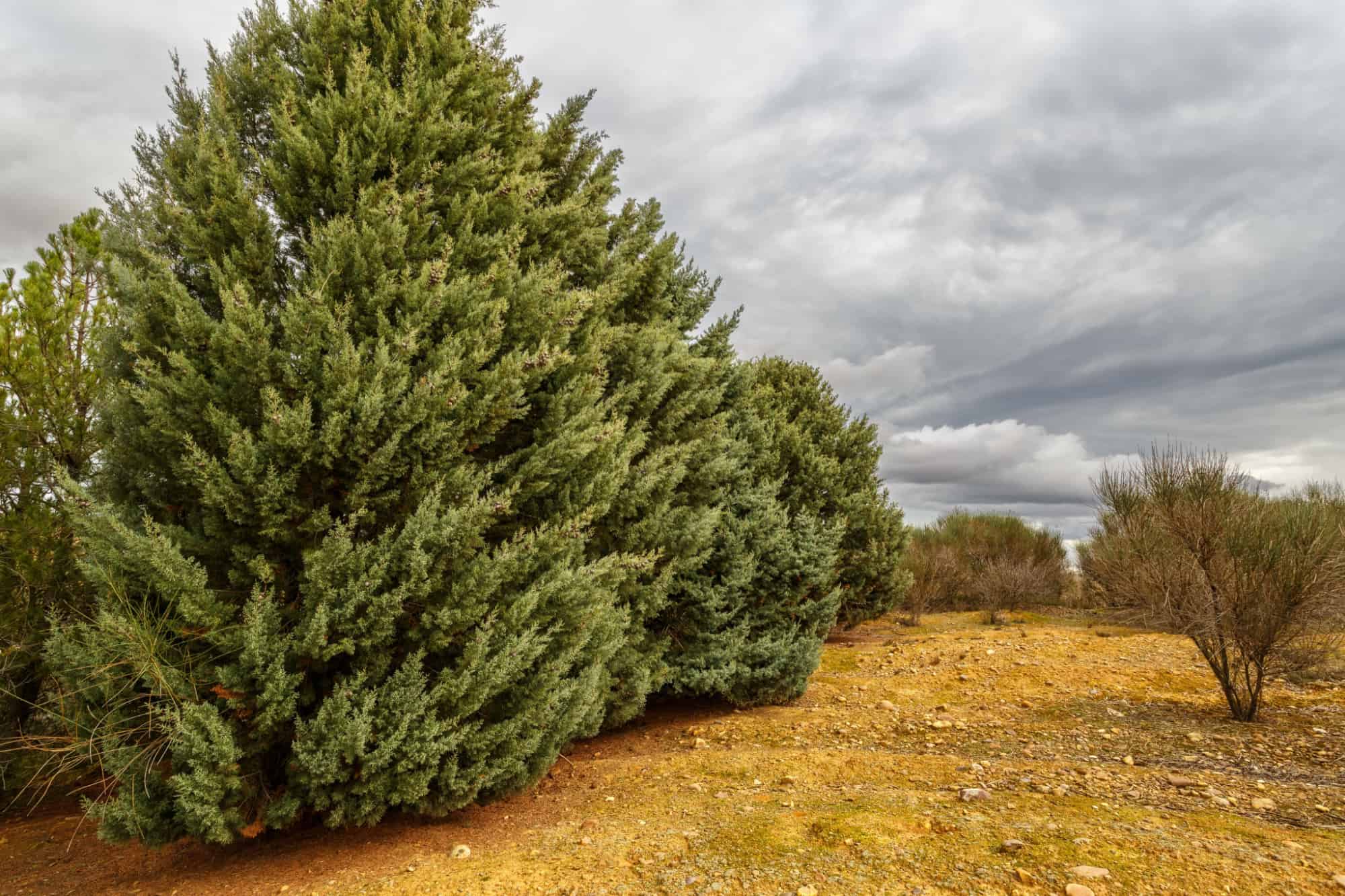
Arizona cypress is typically used for landscaping.
©LFRabanedo/Shutterstock.com
In the traditional sense, these trees aren’t thought of as Christmas trees because we commonly see them as landscaping trees, natural walls separating artificial boundaries. It’s a much prettier option than a chain link or wooden privacy fence. However, the Arizona cypress is also a great Christmas tree.
As the name implies, this is a famous Christmas tree in the southwest and the south to a more minor degree. It has a classic shape for the Christmas season, gives off a pleasant fragrance, and features a lovely red backdrop against the green needles. The right decorations make this tree truly stand out.
Arizona cypress trees are sold between 5′ and 10′ in height, priced between $55 and $165.
12. Scotch Pine

Scotch pine (scots pine) in the wild.
©Helen Hotson/Shutterstock.com
The Scotch pine is one of the more common types of Christmas trees. However, it’s a great option all the same. It has the traditional look and shape that we’ve come to expect from Christmas trees, a pleasant pine scent, and long pine needles.
They also have solid branches, capable of holding up your heaviest of ornaments. The needles are either a deep green or blue/green in color, depending on the date of cut and purchase.
Scotch pine is typically sold at $10 per foot, with trees ranging from 4′ to 7′ in height at $40 to $70. This makes it one of the more affordable options available.
13. Virginia Pine

Virginia pine often gets a bad rep, thanks to how many of these trees grow in less-than-ideal environments.
©Nikolay Kurzenko/Shutterstock.com
Virginia pines grow into excellent Christmas trees when healthy and growing in rich earth. Unfortunately, most people who see pictures of Virginia pines assume this is not the best Christmas tree type available on the market.
Virginia pines are highly fragrant, but not so much that it’s overpowering within the home. The tree is sturdy and relatively robust, with branches capable of holding heavy ornaments. The short needles keep it from being too dense and make ornament hanging a breeze.
Virginia pines sell between 5′ and 10′ in height, costing between $60 and $175.
14. Leyland Cypress
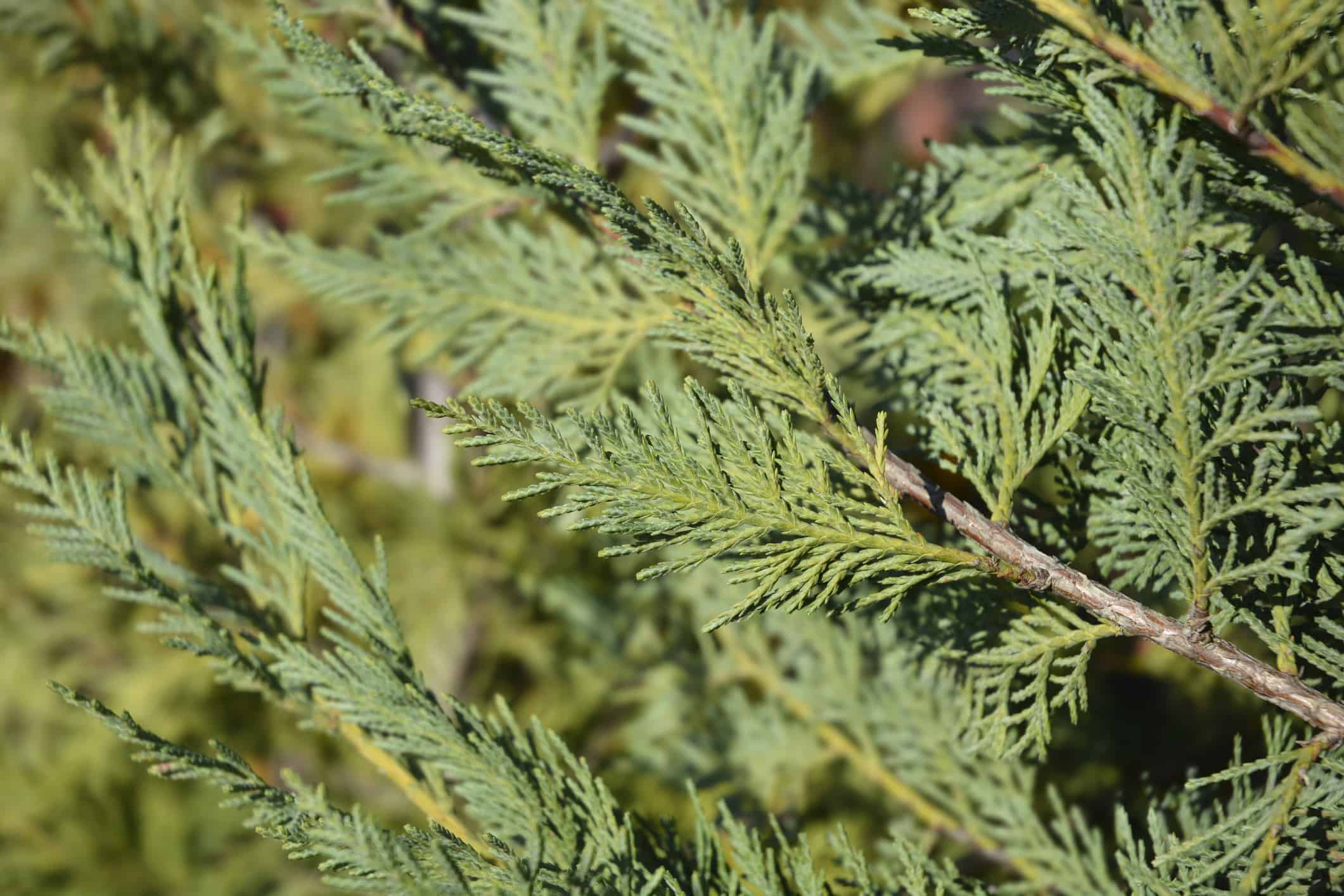
Leyland cypress has unique leaves that resemble the shape of feathers.
©iStock.com/Nahhan
The gray/green Leyland cypress is the last on our list of Christmas tree types. The tree has a distinct, triangular, or pyramid-like shape. As a fast-growing tree, it does require a lot of water to keep its needles springy and branches upright.
Since the branches grow at a steep, upward angle, any droop is immediately noticeable. This tree is also great for those who struggle with evergreen solid or pine scents because it has virtually zero aromas.
Leyland cypress Christmas trees sell between 5′ and 9′ and cost between $50 and $90.
Summary Of The 14 Types Of Christmas Trees And Which Is Best For You This Year
| Christmas Tree | Heights | Costs |
|---|---|---|
| 1. Balsam Fir | 4.5′ to 8.5′ | $60 to $110 |
| 2. White Pine | 4.5′ to 8.5′ | $55 to $90 |
| 3. Fraser Fir | 5′ to 8′ | $60 to $110 |
| 4. Douglas Fir | 5′ to 10′ | $70 to $130 |
| 5. Noble Fir | 5′ to10′ | $60 to $200 |
| 6. White Spruce | 5′ to 12′ | $55 to $115 |
| 7. Grand Fir | 5′ to 10′ | $65 to $150 |
| 8. Blue Spruce | 5′ to 8′ | $60 to $110 |
| 9. Black Hills Spruce | 3′ to 4′ and 5′ to 10′ | $40 to $60 and $60 to $110 |
| 10. Norway Spruce | 5′ to 7′ | $100 to $210 |
| 11. Arizona Cypress | 5′ to 10′ | $55 to $165 |
| 12. Scotch Pine | 4′ to 7′ | $40 to $70 |
| 13. Virginia Pine | 5′ to 10′ | $60 to $175 |
| 14. Leyland Cypress | 5′ to 9′ | $50 to $90 |
The photo featured at the top of this post is © arlutz73/ via Getty Images
Thank you for reading! Have some feedback for us? Contact the AZ Animals editorial team.







